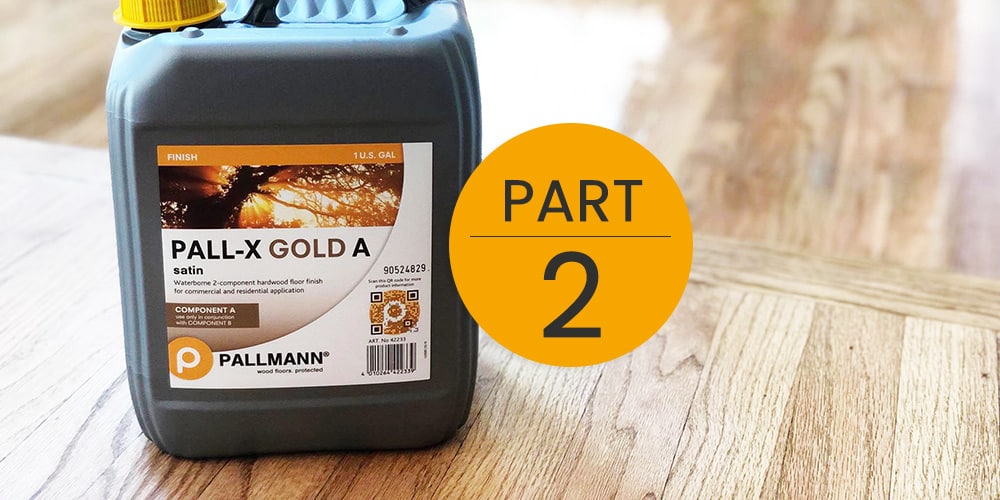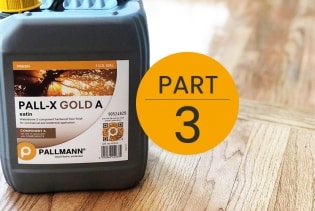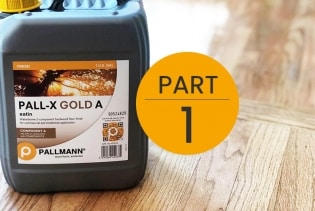How to Choose a Hardwood Floor Finish – Part 2
Choosing a hardwood floor finish is not an easy or obvious decision. As we discussed in Part 1, there are a number of different types of finish systems available – surface finishes, penetrating finishes, waxes and hardwax oils – with many sub-categories in each.

To make things even more complicated, there are other factors that you need to consider about each of these finishes as well apart from just their category. Things like durability, looks, UV resistance, VOCs, maintenance and dry times all need to be considered before deciding on a final choice.
We’ll talk about each of these in this article.

One of the biggest deciding factors when it comes to choosing between all of these finishes is their durability and how they will hold up over time.
Below we’ve listed the three main areas that affect the durability of a finish:
Abrasion Resistance
Abrasion resistance refers to how well a finish stands up to everyday wear from shoes, dirt or other things rubbing and wearing against the finish.
Scratch Resistance
Scratch resistance refers to the finish’s resistance to damage beyond everyday wear. Things like furniture and kitchen appliances being dragged across the floor, rocks brought in by shoes and pets running across the floor with untrimmed claws etc.
Chemical Resistance
Chemical resistance is the measure of a finishes ability to be unaffected by a variety of chemicals such as nail polish remover, blood, coffee, wine, ammonia (pet urine) and alcohol within an allotted time.

While durability is a very important factor in a finish, there are other things to consider as well when choosing which finish to use…
Looks
You want to choose a finish that accentuates the wood’s natural beauty and color and provide a nice sheen. Most surface finishes are available in four sheens: gloss, semi-gloss, satin and matte. Penetrating finishes have a beautiful hand rubbed look unless they are waxed and buffed. Hardwax oils can be either matte or satin.
Fading/Yellowing
As floors age some finishes start to fade, yellow or amberize because of the affect of UV rays. This will be especially noticeable in areas where you have furniture and area rugs that have been moved after a long period of time.
Fumes/Smell
More and more people are concerned about the environmental impact and emissions (VOC’s, solvents and off-gassing) from the products they use. This is a good thing, not only for the protection of our planet, but also for your families and pets health. Some of these finishes have such strong off-gassing as the solvents evaporate that you can’t be anywhere near them for days, sometimes weeks if you’re very sensitive. Others have zero VOC’s and very minimal smell.
Maintenance
You also want your floors to be easy to look after, clean and maintain. Surface finishes provide a hard, durable surface that is very easy to sweep, damp wipe and keep clean in general. If properly maintained they provide excellent moisture and chemical resistance. However, when the surface is scratched or damaged, they can be more difficult to repair without professional help.
Penetrating finishes on the other hand can be easier to repair if they’ve been scratched. Most scratches can be repaired by simply recoating the affected area. But they offer minimal resistance from water and chemical damage and thus need to be maintained often.
Hardwax oil finishes really excel is this regard because they have great moisture and chemical resistance and are also much easier to repair and maintain.
Drying/Curing Time
You want your floors looking great but you also don’t want to be out of your home for any longer than you need to be. Because of this the drying, application and curing time becomes important, especially if you need to move back in a hurry.
Whew! That’s a lot of things to think about.
Thankfully you won’t have to test each and every one of these finishes for yourself though. We’ve had the benefit of using and testing all of these finishes in many different circumstances over many years and we’re happy to pass that insight and knowledge on.
In Part 3 of this series we’ll line each finish system up in a side by side comparison chart so you can see how these finishes compare to each other. We’ll also provide a list of important questions you need to ask yourself before making your final choice. See you in the next installment.
–
Updated Jan 2023



How do you recolor the floor before you apply the finish? Will all finishes work well over oil-based color stains?t
Hi Paul,
Yes the stain needs to be applied before the finish is applied. Most finishes will work over an oil based stain if they are allowed to dry and cure properly. We always suggest testing first though to know for sure.
Tadas
just found your blog. I hope you’re still there! A painter rubbed watco refinishing oil into my newly very dark stained, buffed, then varathaned white oak floor. The original floor refinisher said I would have to sand it back to bare wood again. Is there anything I can do short of this? HELP!
Hi Marlene,
Sorry to hear about your troubles :(
Is it Watco Danish Oil that was used? I haven’t heard of “watco refinishing oil” sorry. Why would the painter do that? Is it only in a small area or did he apply it all over the floor?
If it was me I would apply some of the same oil on a sample board or in a closet and then try a few ways of cleaning it first to see if it can be removed. Your refinisher should know what products could work with the finish he has used. It may be that the only way to go is a complete re-sand, but you will want to test first.
Hope it works out well for you.
Tadas